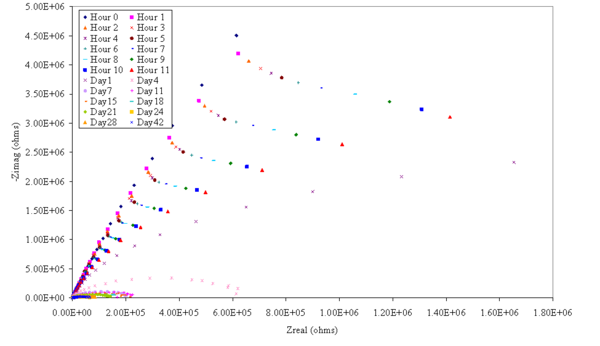Sol gel techniques have been gathering interest as a possible replacement for hexavalent chromium. Alkoxysilane monomers first proceed through a hydrolysis step (“sol”) with water followed by reaction with each other in a condensation step to thicken and form a cross-linked network (“gel”). When it is applied to a metal such as aluminum through a spin-coating or dip-coating process, for example, the siloxanes also form covalent bonds to the metal surface. This leaves a tightly cross-linked network well bonded to the metal surface to act as a barrier to water and corrosive salts. Additionally, the monomers may be functionalized with various reactive groups that provide further cross-linking ability and the ability to form covalent bonds to a subsequent coating for improved adhesion.
In our lab we focus on the electrochemical characterization of coatings based on sol-gel chemistry working in conjunction with Dr. Andrew Vreugdenhil at Trent University (http://www.trentu.ca/chemistry/avreugdenhil/).

This Web page represents the views of the author and not necessarily those of North Dakota State University.
NDSU is not responsible or liable for its contents.